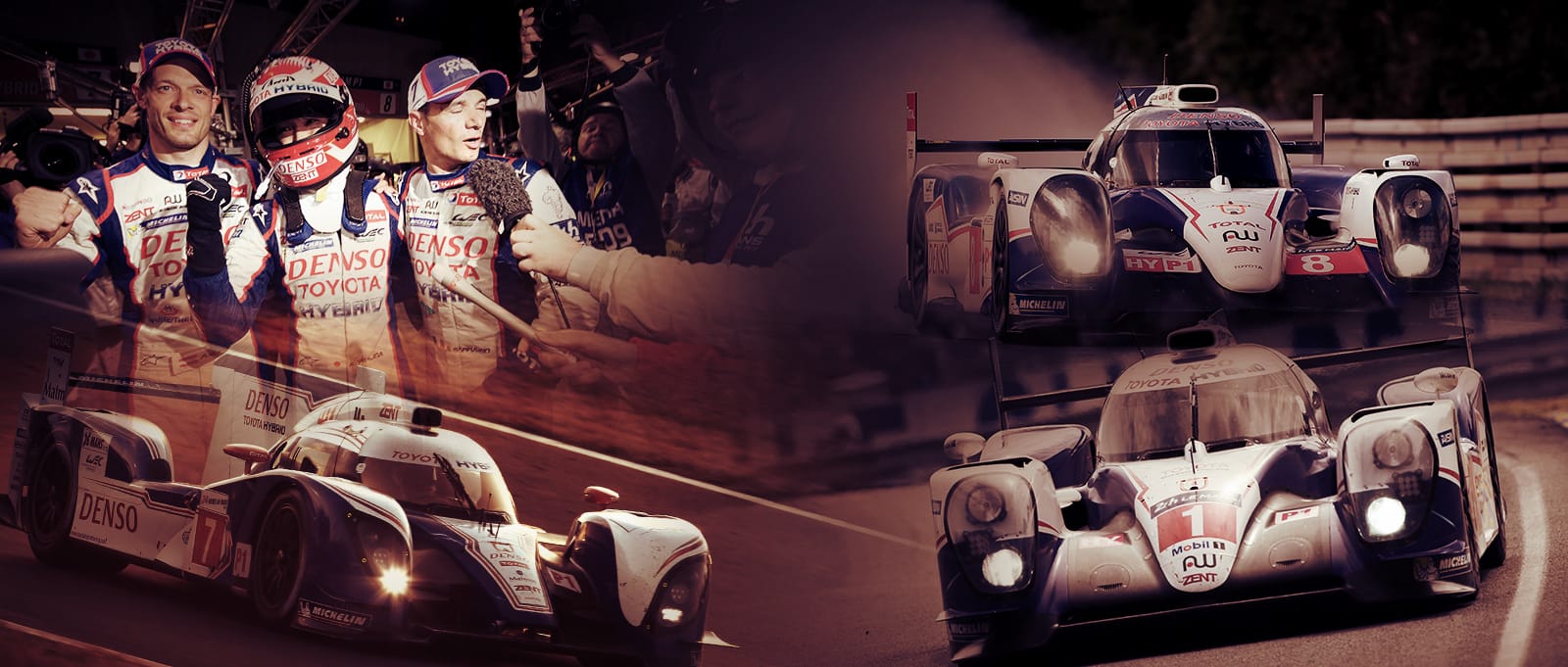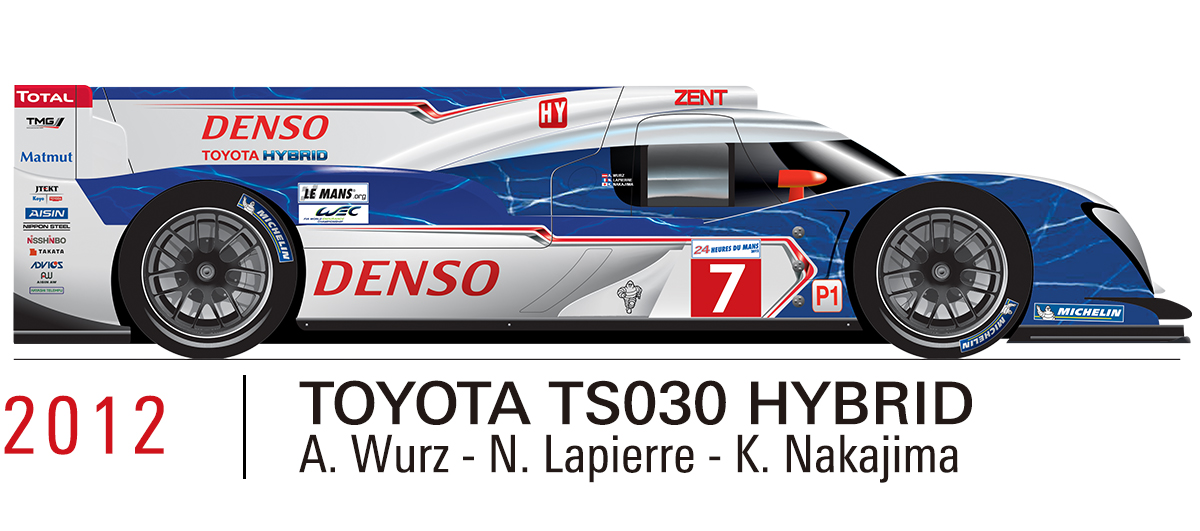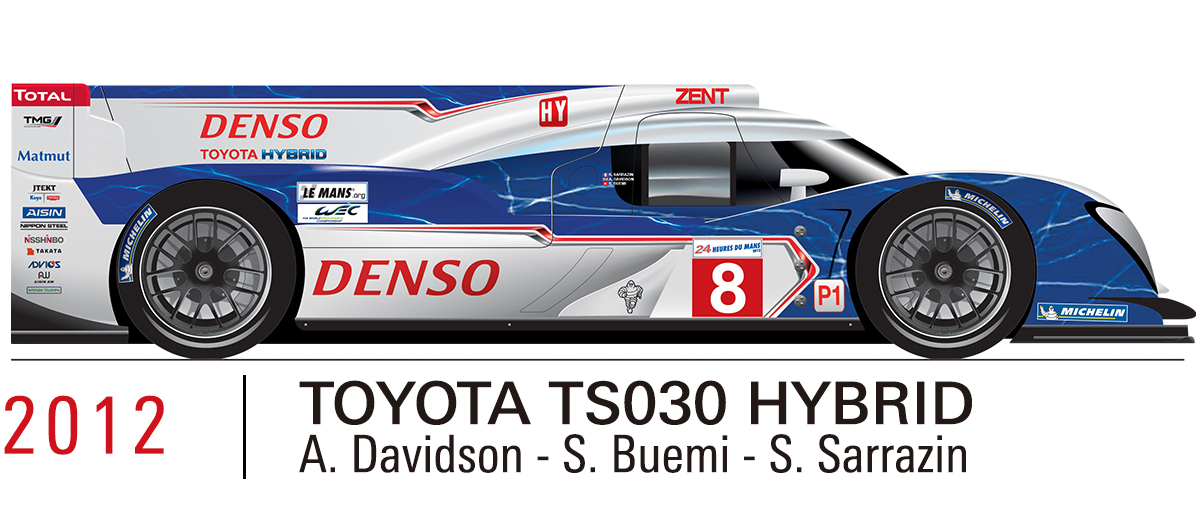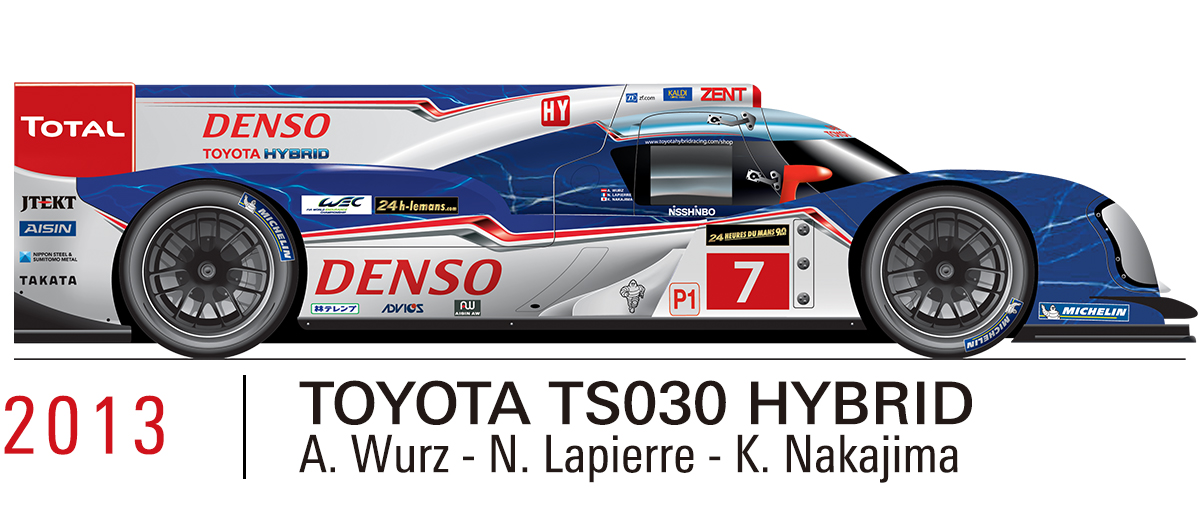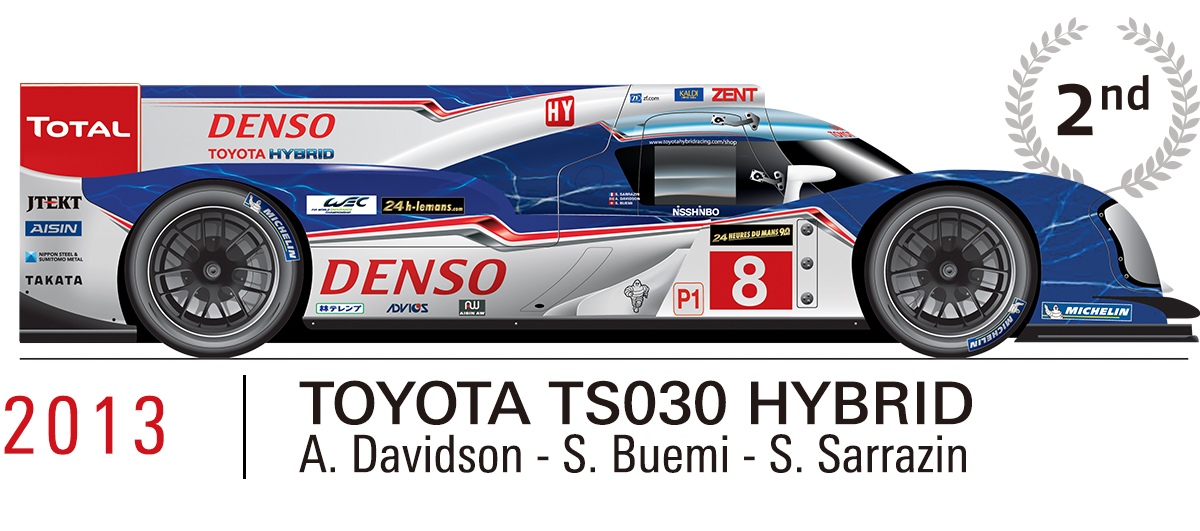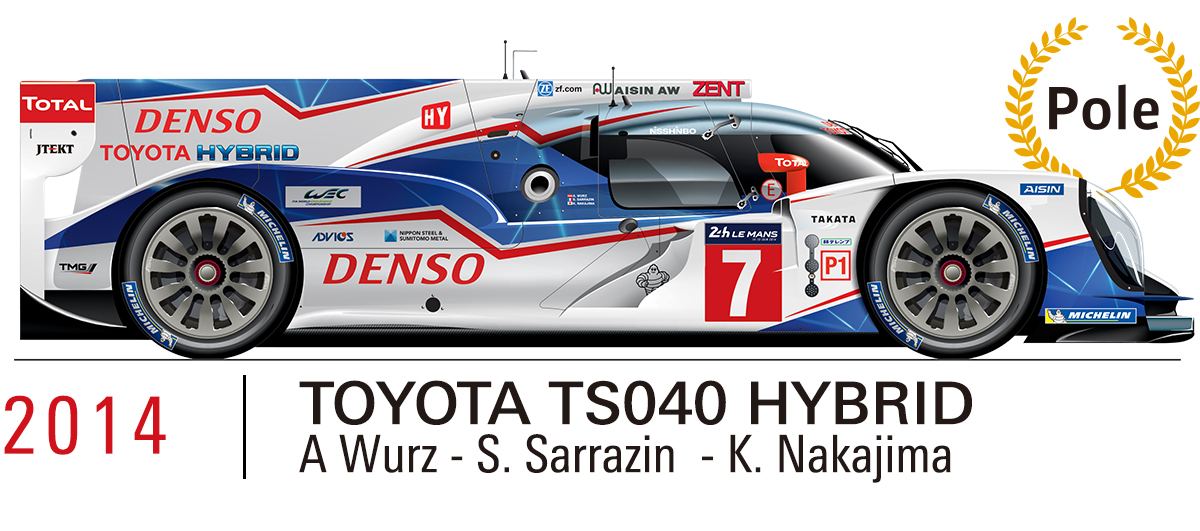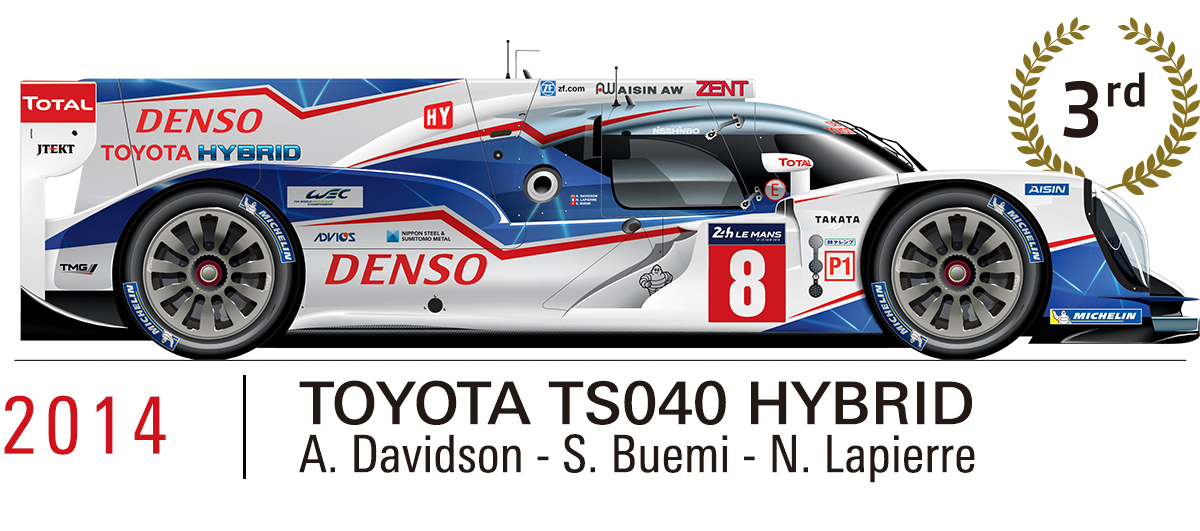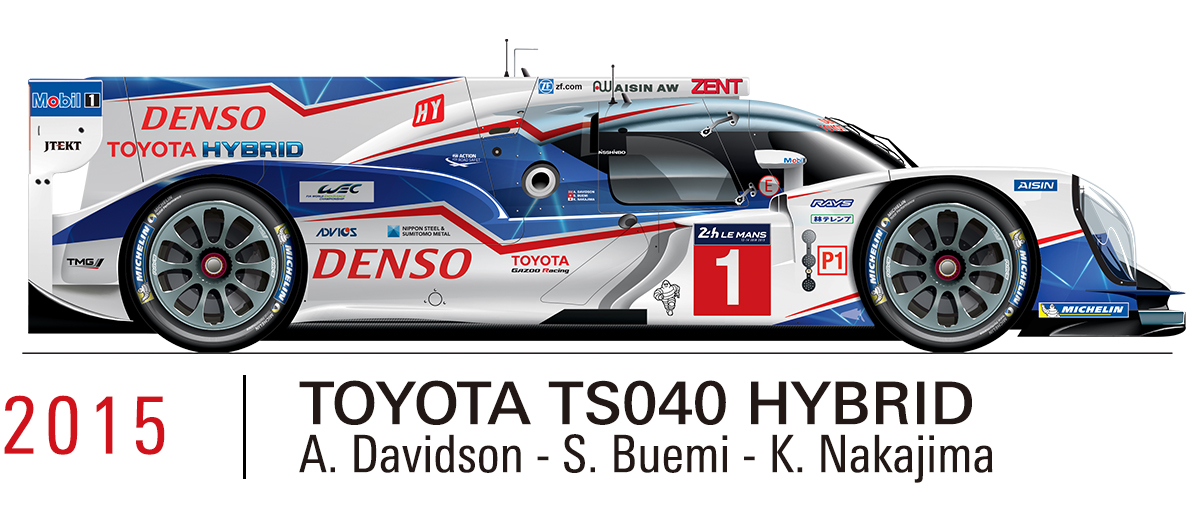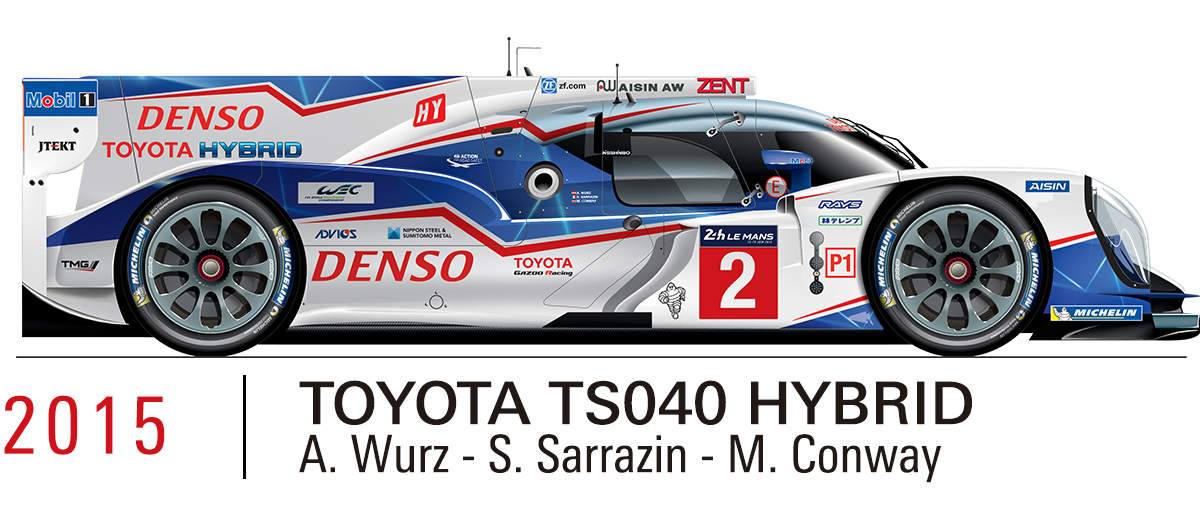The History of TOYOTA at Le Mans
Looking back over a long history of unending challenges
2012-2015
Kazuki Nakajima become the first Japanese to take pole position in the TS040 HYBRID
The year 2012 saw the start of the FIA World Endurance Championship (WEC), with the 24 Hours of Le Mans becoming a round of this new series. Toyota would participate in this inaugural WEC season with the Toyota TS030 HYBRID, a car combining a chassis built by TMG with a hybrid power unit developed at the Higashi-Fuji Technical Center. With this, a Toyota hybrid system made its first appearance at the 24 Hours of Le Mans. Two of the TS030 HYBRID finished the qualifying in 3rd and 5th positions, but in the race, one of them suffered a collision with an LM GTE Am class car and crashed. The other Toyota TS030 HYBRID also had to retire from the race due to machine trouble just before reaching the half-way point.
The following year (2013), a further advance version of the TS030 HYBRID was entered in the Le Mans race, finishing 4th and 5th in the qualifying and going on to battle for the lead in the race, before finishing the 24 hours in 2nd and 4th places and showing a great evolution over the previous year.
Then in 2014, the new TS040 HYBRID performed spectacularly in the WEC series. After dominating wins in the first two rounds of the series, the team went to Le Mans as the favorites to win. There, Kazuki Nakajima become the first Japanese driver in the first Japanese car to take pole position at Le Mans, but in the race, two of the cars became victims of bad luck in the form of an accident and machine trouble and the No. 7 car driven by Nakajima was forced to retire from the race. One of the remaining TS040 HYBRIDs was able to finish the race in 3rd place, as the team's best performance.
There was big consolation, however, as Toyota won the series Drivers and Manufacturer world championship titles.
Then came the 2015 series, to which Toyota brought two improved versions of the TS040 HYBRID. There had been big improvements in the machine's reliability, but it failed to keep pace with the improvement in speed made by its rivals, and in the end both cars finished the race in 6th and 8th place respectively. The team would have to put their hopes of a long-awaited Le Mans victory off for another year.
